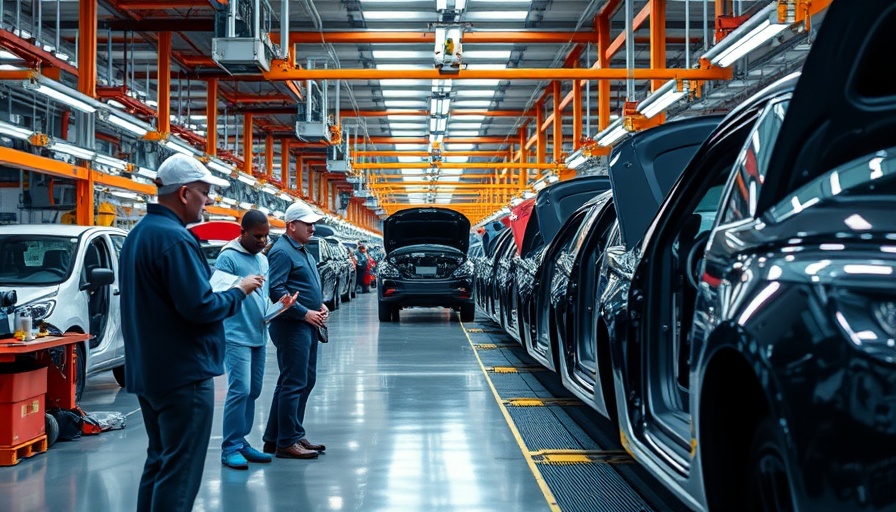
Understanding the Tariff Impact on Auto Purchases
The landscape of the auto industry has recently been marked by significant tariff changes under President Trump’s administration. An important aspect is the proposed relaxation of a 25% tariff on imported autos and auto parts. Such a decision could influence both car dealers and shoppers navigating an already tumultuous market. With many vehicles in the United States relying on parts sourced from Mexico, Canada, and China, the implications of these tariffs extend far beyond the dealership and into the homes of everyday consumers.
Shifting Dynamics: Dealer Perspectives Amid Tariff Changes
Thad Szott, the owner of Szott M-59 Dodge-Ram in metro Detroit, shares his insight on the present auto market dynamics fueled by tariff-related uncertainty. "Manufacturers have been proactive in offering employee pricing and other incentives to foster stability," Szott points out. This move seeks to encourage purchases before potential price increases attributed to tariffs begin to affect consumers. As buyers become conscious of upcoming cost increases, some rush to secure their deals—a trend exemplified by buyer Ryan Rayment, who expresses urgency in making a purchase choice.
Consumer Behavior and Economic Implications
The interplay between tariffs and consumer behavior is profound. The looming threat of rising prices can lead individuals, like Rayment, to act swiftly, prioritizing their purchases to avoid higher costs later. However, the reality is more nuanced. While some buyers seek deals before the potential price hikes, broader economic concerns persist. If tariffs diminish demand due to rising vehicle costs, this could exacerbate instability in the market, signaling potential longer-term challenges as articulated by industry CEO Dale Hadel.
The Bigger Picture: Factory Voices and Tariff Concerns
It's crucial to consider the voices within auto factories, such as those represented by Stephanie Smith, a worker at the Stellantis Mack Assembly Plant. She underscores the human cost of tariff policy, indicating it could translate to job losses—some temporary, some possibly permanent. The fear that current layoffs could evolve into longer-term cuts reflects a deep-seated anxiety among workers within the industry, pointing to the tariff impact on job security in manufacturing. Smith's skepticism regarding the benefits of tariffs suggests a rift in confidence among workers who risk being adversely affected by these policies.
Factory Employment: The Ripple Effects of Tariff Instability
Dale Hadel, running a global supplier business, resonates with Smith's fears regarding job stability as he articulates concerns about the negative impact tariffs could have on suppliers. The dynamics of bringing jobs back to the U.S. are complex, considering the modern demands for retooling and substantial investments needed in domestic infrastructure. For Hadel, stability is paramount—without it, the broader economic ecosystem surrounding automotive production could suffer immensely.
Looking Ahead: Navigating the Uncertain Auto Market
As the dust from tariffs settles, the question remains: how can dealers and consumers best prepare for the unfolding landscape? The current situation calls for vigilance among both parties—dealers must navigate customer anxieties while finding ways to remain competitive, and consumers need to be informed to make wise purchase decisions. With potential shifts in tariff policy just around the corner, those engaged in the auto industry must remain adaptable as they face new hurdles.
The landscape of tariffs affecting the automotive industry is fraught with uncertainty, yet the voices of dealers, consumers, and factory workers reflect a complex web of concerns that should not be overlooked. As decisions unfold, the broader community must keep persisting towards stability, fostering a cooperative approach that addresses concerns across all fronts.
 Add Row
Add Row  Add
Add 




 Add Row
Add Row  Add
Add 

Write A Comment